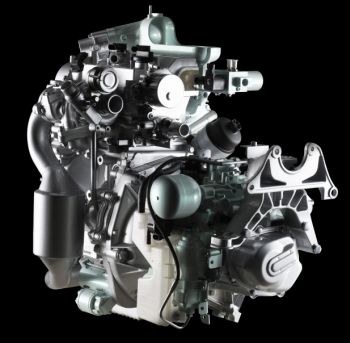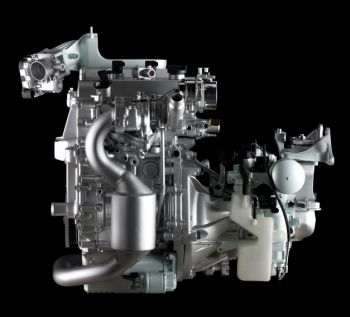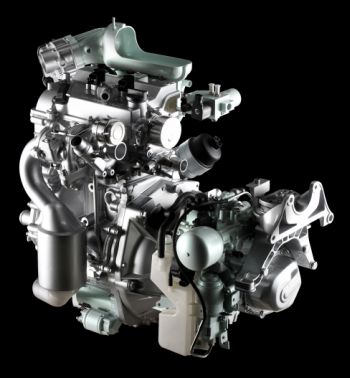

 |
|
A new two-cylinder, 900cc
petrol engine will arrive in 2010. This
brand-new powerplant, dubbed SGE (Small
Gasoline Engine), is expected to be the
first of a new modular family built around
the individual 450cc cylinder unit. |
|
|
|
Head of Fiat Powertrain Technologies,
Alfredo Altavilla, has set forth details of his
company’s plans for 2009, which reveal a hectic schedule
and the debut of a raft of new developments. In an
interview with Italian newspaper Corriere della Sera,
Altavilla revealed that next year will be an
exceptionally busy one for FPT, which will launch onto
the market a dual-clutch transmission, its new
‘Multiair’ hydraulic valve actuation technology, and a
new type of diesel injector, dubbed ‘Multijet 2’. A
newly-developed two-cylinder, 900cc petrol engine will
follow in 2010.
This brand-new powerplant, dubbed SGE
(Small Gasoline Engine), is expected to be the first of a
new modular family built around the individual 450cc
cylinder unit. To be offered in three forms –
naturally-aspirated, turbocharged, and a flex-fuel ‘Natural
Power’ version designed to run on compressed natural gas (CNG)
– it is set to replace the naturally-aspirated variants of
the long-serving FIRE family, which is currently
manufactured in 1.1, 1.2 and 1.4 litre capacities. The new
SGE 900cc bi-cylinder engine will initially be offered with
a range of four power outputs – 65, 80, 90, and
105bhp. Later, Fiat will also offer the option of a CNG and
hydrogen compressed gas solution, similar to that seen in
the Panda Aria concept car. Altavilla said that other
manufacturers have enquired about the engine’s availability,
but did not provide specific details.
Set to finally hit the marketplace next
year, Multiair hydraulic valve actuation technology has been
under continuous development by Fiat for many years. The
Italian carmaker is alone in pursuing this technology, which
offers the potential for continual valve adjustment and thus
optimised efficiency. Altavilla has previously said that
engines equipped with Multiair offer up to 20 per cent more
torque, at lower revs, as opposed to a conventional
mechanical system.
He also confirmed that the new Multiair
technology's debut would be seen on the replacement for the
Alfa Romeo 147, Progetto 940, which will make its world
premiere at the Frankfurt IAA. The system will debut on the
group’s 1.4 FIRE T-Jet engine, before spreading to all Fiat
Group petrol engines. These include the SGE, on which it
will help to reduce CO2 emissions to below 100g/km.
The new two-cylinder is specifically
designed to minimise its environmental impact. Designed for
A- and B-segment cars, it will find its way into the 500,
Topolino, Grande Punto, next-generation Panda and new Lancia
Ypsilon, as well as the low-cost cars being developed by
Fiat Brazil. In addition, it features a space-saving
integrated inlet manifold, in anticipation of a future
hybrid version.
Moreover, Fiat Powertrain is also working
on widening its applications of stop-start
technology. According to Altavilla in the interview, the
technology reduces emissions by an average of 3 to 4 per
cent, with a reduction in fuel consumption of up to 15 per
cent in city driving.
Meanwhile, on the diesel side of the equation, FPT has been busily developing
the next leap ahead in oil-burning technology, Multijet 2, in conjunction with
Bosch. Altavilla says that Multijet 2 will mark a great leap forward,
equivalent in scope to that of the original introduction of common-rail on the
Alfa 156 JTD in 1997. Unlike on that occasion, however, he says that Fiat
intends to hang on to the patent for this latest-generation technology. He
notes that it offers particular benefits in emissions and, especially, low-rev
torque. Like Multiair with petrol engines, Multijet 2 will find its way onto
every diesel built by FPT. Saying that it will arrive in the last third of the
year, Altavilla suggests that 90 per cent of all diesels will use the technology
within a decade.
by Shant
Fabricatorian
|